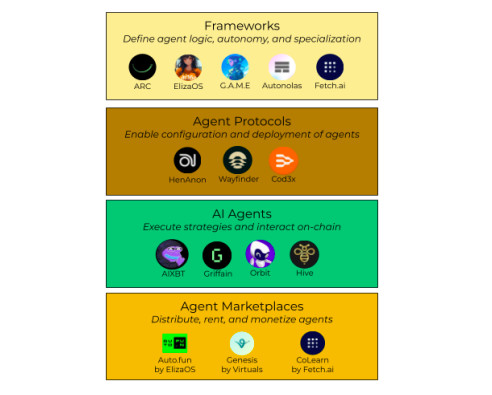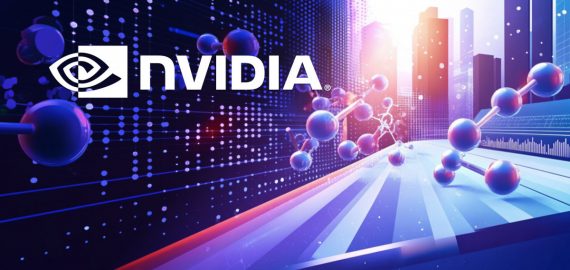DeFAI: Binance Describes A Simpler And Smarter Way To Build DeFi


In Brief
Binance Research released a report on DeFAI, a concept aiming to improve DeFi by integrating AI agents, enhanced risk tools, and smarter protocol management.

Binance Research (the analytical division of the Binance crypto exchange) has published a detailed report about a new idea called DeFAI. The report is named “DeFAI Unstacked: The Future of On-Chain Finance”. It looks at how current DeFi systems are slowing down, and how DeFAI could help fix those problems by using artificial intelligence and smarter tools.
DeFAI stands for “Decentralized Finance powered by Autonomous Intelligence”. In simple words, this means using AI agents that can work on their own inside blockchains. These agents could move money, manage risks, and react to what’s happening on the market — all without needing human input every time.
Binance says that this is a big step forward compared to older DeFi systems. Today, most DeFi tools are slow to update, hard to use, and not flexible. The new idea behind DeFAI is to make these systems faster, easier, and smarter.
The report shows that DeFi’s total value locked (TVL) has stayed between $50 and $60 billion since 2022. This number hasn’t grown much, which means the space may be stuck. Binance believes the problem is not only the market. It’s also how DeFi is built — and that’s where DeFAI comes in.
DeFAI is not just another buzzword in the crypto space. It reflects a practical need for improved systems that can respond to users faster and handle money flows more safely. As more people begin to rely on blockchain finance, the pressure grows to build systems that are easier to trust and use — not only by experts, but also by everyday users who want stability, security, and better performance.
What’s Wrong With DeFi Today?
Binance explains that many DeFi tools are too hard to use. They need people to click many buttons, sign wallet messages, and pay high gas fees. This makes DeFi feel slow and confusing. It’s not friendly for new users.
Another problem is that many DeFi apps use fixed smart contracts. These contracts cannot change unless developers update them with a full redeploy. That means the system can’t adjust to new risks or changing markets without long delays.
Most DeFi tools also check risks too late. They don’t act until something already goes wrong. As the report notes, “Without insight into why an agent took a specific action… users cannot assess the agent’s alignment, competence, or integrity.”
This lack of transparency, combined with delayed reaction times, creates serious risks — both in classic DeFi tools and future AI systems. It can lead to poor decisions, system failures, and ultimately, financial losses for users.
Binance says that DeFAI agents can work better. They can watch user activity, market moves, and even wallet behavior in real time. They could act before a problem gets worse — for example, by moving assets, changing pools, or warning users automatically.
The report also says that current DeFi systems waste money. Liquidity is often stuck in places where it’s not used. Binance believes that with programmable liquidity, DeFAI agents can move funds to where they are needed the most, in real time. This could help make protocols more efficient.
At the same time, users need tools that don’t overwhelm them with choices or require constant attention. DeFi has created powerful financial layers, but they are often too complex for wider use. DeFAI can simplify access by automating what today takes hours or days to manage manually. That alone could make it more appealing to institutions and retail users alike.
How DeFAI Systems Will Work
Binance explains that DeFAI tools work in layers. At a basic level, the architecture includes five system roles: execution, data, intelligence, control, and interface. These pieces work together at the same time, allowing systems to act faster and adapt more easily to changes.
But the report goes further and introduces a second, applied model: the modular agent stack, made up of four key layers:
- Frameworks – define how agents are built, how much freedom they have, and what kind of tasks they specialize in
- Agent Protocols – provide tools to configure, deploy, and run these agents
- AI Agents – smart bots that make decisions, manage liquidity, vote in governance, and execute actions on-chain
- Agent Marketplaces – allow developers and users to share, sell, or rent agents as modular services
As the report explains, “The ecosystem is crystallizing into four distinct architectural layers, each playing a unique role in the lifecycle and scalability of autonomous agents.”
These four levels show how autonomous logic is already being tested in live systems. Projects like ARC (AI research and automation framework), ElizaOS (operating system for building agent economies), Wayfinder (agent deployment protocol by Ritual), AIXBT (AI-driven trading agent platform), and Virtuals Protocol (toolkit for deploying agent-based on-chain apps) are actively building real agents that manage assets, route trades, and even participate in DAO votes.

As these tools grow, Binance notes that new questions appear: who owns the agent’s actions? How transparent should its behavior be? What happens if the agent fails?
The report proposes several answers: agent DAOs for shared ownership, kill switches for emergency control, and zero-knowledge proofs to make agent behavior auditable without exposing sensitive data.
Together, these tools support the view that DeFi is moving into a more autonomous, modular, and intelligent phase—but only if clear safety rules and strong standards are built into the process.
This makes DeFAI more than just a tech upgrade. It becomes a way to build safer, smarter, and more flexible finance—one that is shaped not only by code, but also by governance and accountability.
DeFAI in Action: Real Use Cases Emerging in 2025
DeFAI could change how people use blockchain finance. Here are a few examples from the report:
- Smart Investment Bots: These agents could manage crypto portfolios. They can buy, sell, and rebalance automatically.
- Flexible Liquidity Pools: These pools can change fee settings or token pairs based on usage or market trends.
- Safe Transactions: AI agents can check if a transfer follows local rules. They can block or adjust actions before they happen.
- Risk Watchers: These bots monitor loans. If a loan is about to go bad, the system can act early to protect both sides.
In simple terms, DeFAI makes systems that can protect themselves and respond quickly. This may lower the risk of hacks, loss, or delays.
But it’s not easy to build.
What Are the Challenges?
The report lists problems that DeFAI systems will need to solve:
- Bad Training: If the AI learns from bad data, it can make wrong choices.
- Who Is In Charge?: Someone must decide who builds and controls these AI tools.
- Hard to Check: AI is harder to test than normal code. It’s not always clear why it made a choice.
- Laws: Some countries may treat AI-powered finance as a bank or licensed service.
These challenges are especially serious when users can’t fully understand or verify how decisions are made by agents. As the report warns:
“Without insight into why an agent took a specific action—be it a trade, liquidity move, or governance vote—users cannot assess the agent’s alignment, competence, or integrity.”
To reduce risk, Binance suggests starting with limited AI powers. The AI should work inside clear rules. Humans should still be able to stop actions when needed.
They also say that DeFAI should be built step by step. Teams can test ideas in small environments first. Only then should they move to the main networks. This way, the system can improve safely.
Even with all these challenges, the report shows a belief in progress. The tools may not be perfect now, but they can improve quickly. Developers who test early may help shape the future of how DeFAI will work.
What’s Next for DeFAI?
Binance thinks the move from DeFi to DeFAI will happen slowly. It may start between 2025 and 2026. Some developers are already testing these ideas. For example, they are building tools like:
- Vaults that run themselves
- Bots that move assets between chains
- Tokens that change supply based on market needs
Binance believes DeFAI is more than a trend. It’s a clear answer to real problems. DeFi has reached limits. It needs help from smarter tools. If DeFAI works, it could bring faster systems, better safety, and easier apps for both users and companies.
Right now, it’s still early. But the plan is here. Developers who want to work on better finance tools can use the DeFAI stack as a starting point.
DeFAI may become the system that bridges crypto’s future with smarter design. It could help users move between chains, manage risk, and access financial tools without deep technical knowledge. That vision makes it one of the most important ideas to watch as Web3 infrastructure continues to grow.
Disclaimer
In line with the Trust Project guidelines, please note that the information provided on this page is not intended to be and should not be interpreted as legal, tax, investment, financial, or any other form of advice. It is important to only invest what you can afford to lose and to seek independent financial advice if you have any doubts. For further information, we suggest referring to the terms and conditions as well as the help and support pages provided by the issuer or advertiser. MetaversePost is committed to accurate, unbiased reporting, but market conditions are subject to change without notice.
About The Author
Alisa, a dedicated journalist at the MPost, specializes in cryptocurrency, zero-knowledge proofs, investments, and the expansive realm of Web3. With a keen eye for emerging trends and technologies, she delivers comprehensive coverage to inform and engage readers in the ever-evolving landscape of digital finance.
More articles

Alisa, a dedicated journalist at the MPost, specializes in cryptocurrency, zero-knowledge proofs, investments, and the expansive realm of Web3. With a keen eye for emerging trends and technologies, she delivers comprehensive coverage to inform and engage readers in the ever-evolving landscape of digital finance.


















































